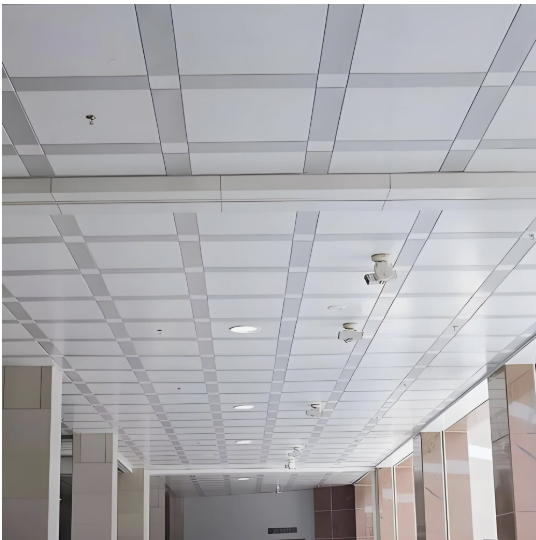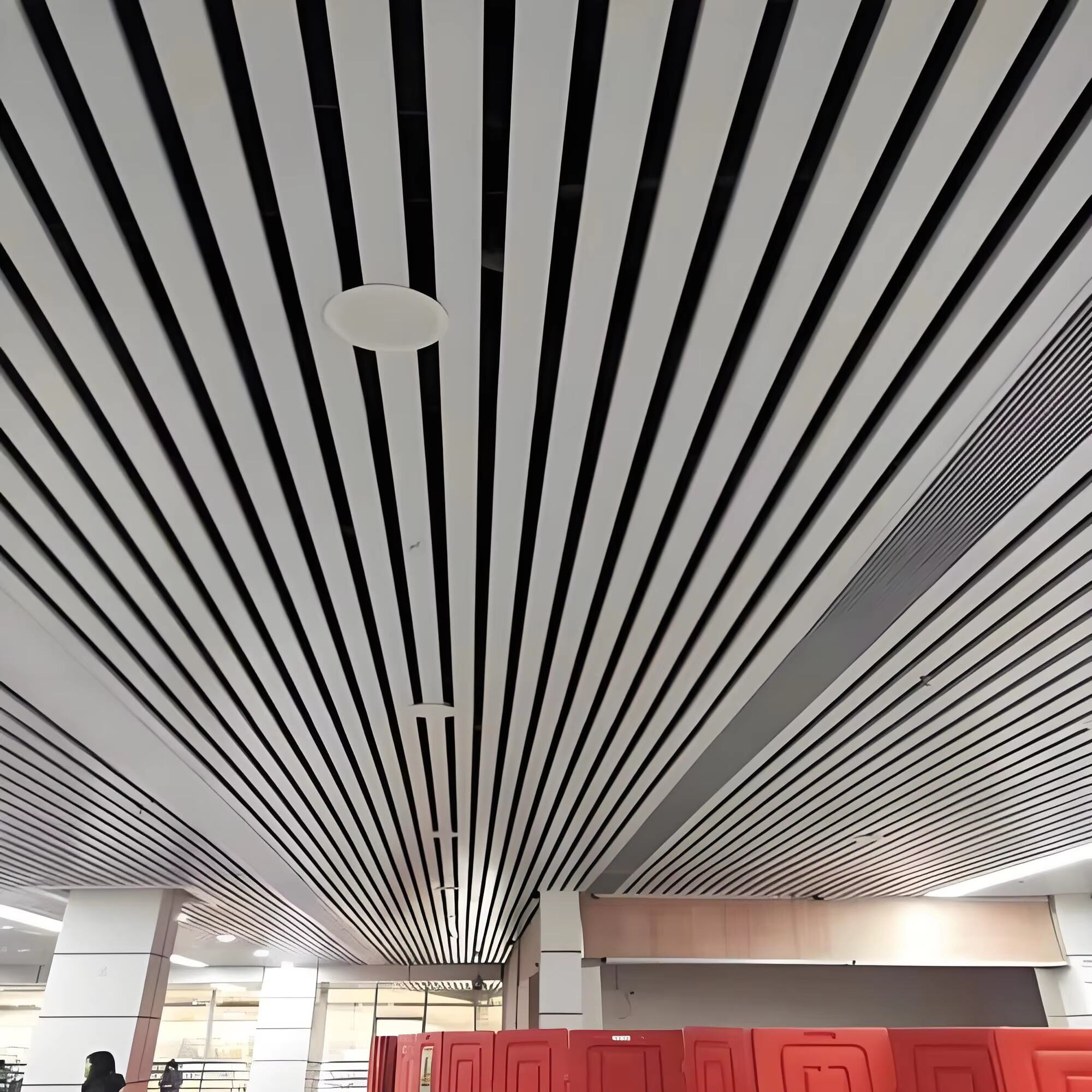Μετασχηματίζοντας Εσωτερικούς Χώρους με Προηγμένες Λύσεις Οροφών
Η σύγχρονη αρχιτεκτονική σχεδίαση επικεντρώνεται όλο και περισσότερο στη δημιουργία χώρων που να είναι όχι μόνο αισθητικά ελκυστικοί, αλλά και λειτουργικά ανώτεροι. Το ανοιχτό διαδοχικό οροφικό σύστημα από μέταλλο αποτελεί μια καινοτόμο προσέγγιση στη σχεδίαση οροφών που μεταμορφώνει τη διακίνηση του αέρα σε εσωτερικούς χώρους. Οι πρωτοποριακές αυτές λύσεις οροφής συνδυάζουν βιομηχανική αισθητική με πρακτικά οφέλη, αποτελώντας όλο και πιο δημοφιλή επιλογή για αρχιτέκτονες, διαχειριστές κτιρίων και ιδιοκτήτες ακινήτων που επιδιώκουν τη βελτιστοποίηση της απόδοσης των κτιρίων τους.
Τα προηγμένα αυτά συστήματα οροφής αποτελούνται από προσεκτικά σχεδιασμένα μεταλλικά πλέγματα που επιτρέπουν την ελεύθερη κυκλοφορία του αέρα, διατηρώντας παράλληλα τη δομική ακεραιότητα και την οπτική αισθητική. Με την εγκατάσταση αυτών των συστημάτων, τα κτίρια μπορούν να επιτύχουν ανώτερο εξαερισμό, βελτιωμένη θερμική άνεση και καλύτερη ποιότητα του εσωτερικού αέρα. Η ανοιχτή δομή δημιουργεί φυσικές διαδρομές για την κίνηση του αέρα, συνεργαζόμενη με τα συστήματα θέρμανσης, ψύξης και εξαερισμού για τη δημιουργία πιο αποτελεσματικών και άνετων περιβάλλοντων.

Στοιχεία Σχεδίασης και Τεχνικές Προδιαγραφές
Σύσταση και Δομή Υλικού
Η ανοιχτό διαδοχικό οροφικό σύστημα από μέταλλο συνήθως διαθέτει εξαρτήματα από υψηλής ποιότητας αλουμίνιο ή χάλυβα, τα οποία έχουν σχεδιαστεί για να είναι ανθεκτικά και να διαρκούν πολύ χρόνο. Τα υλικά αυτά υποβάλλονται σε ειδικές επεξεργασίες για να αντέχουν στη διάβρωση και να διατηρούν την εμφάνισή τους με την πάροδο του χρόνου. Το πλέγμα μπορεί να προσαρμοστεί σε διάφορα μεγέθη και διαμορφώσεις κελιών, δίνοντας στους σχεδιαστές τη δυνατότητα να εξισορροπούν τις αισθητικές προτιμήσεις με τις απαιτήσεις εξαερισμού.
Τα δομικά εξαρτήματα κατασκευάζονται με ακρίβεια για να εξασφαλίζεται η ομοιόμορφη απόσταση και η συνεπής απόδοση σε όλη την επιφάνεια της οροφής. Τα ανοιχτά κελιά μπορούν να κυμαίνονται από μικρά, πολύπλοκα σχέδια μέχρι μεγαλύτερες ανοίξεις, τα οποία έχουν σχεδιαστεί για να βελτιστοποιούν την κυκλοφορία του αέρα, ταυτόχρονα με την κάλυψη συγκεκριμένων αρχιτεκτονικών και λειτουργικών απαιτήσεων.
Εγκατάσταση και ενσωμάτωση
Επαγγελματική εγκατάσταση μεταλλικών ανοιχτών κραβάτσα Δικτύου η εγκατάσταση των συστημάτων περιλαμβάνει προσεκτική εξέταση της υπάρχουσας υποδομής και της διαρρύθμισης της κλιματιστικής. Η μοντουλική φύση αυτών των συστημάτων επιτρέπει την άψογη ολοκλήρωση με φωτιστικά, συστήματα πυρόσβεσης με νερό και άλλον εξοπλισμό οροφής. Τα συστήματα ανάρτησης είναι κατασκευασμένα έτσι ώστε να παρέχουν σταθερή υποστήριξη, διατηρώντας παράλληλα την απαραίτητη απόσταση για βέλτιστη ροή αέρα.
Η διαδικασία εγκατάστασης περιλαμβάνει στρατηγικό σχεδιασμό της τοποθέτησης του πλέγματος για μεγιστοποίηση των μοτίβων κυκλοφορίας του αέρα και εξασφάλιση ομοιόμορφης κατανομής σε όλο τον χώρο. Η προσοχή στις λεπτομέρειες κατά την εγκατάσταση είναι αποφασιστικής σημασίας για την επίτευξη όλων των πλεονεκτημάτων βελτιωμένου εξαερισμού και θερμικής άνεσης.
Πλεονεκτήματα και απόδοση εξαερισμού
Βελτιωμένα μοτίβα κίνησης αέρα
Η ανοιχτή διάταξη των συστημάτων οροφής με μεταλλικό πλέγμα δημιουργεί φυσικές θερμικές ροές οι οποίες διευκολύνουν την κυκλοφορία του αέρα σε όλο τον χώρο. Ο ζεστός αέρας ανέρχεται φυσικά και μπορεί εύκολα να διέρχεται μέσω των ανοιγμάτων του πλέγματος, ενώ ο ψυχρότερος αέρας κατέρχεται, δημιουργώντας έτσι έναν συνεχή κύκλο κυκλοφορίας του αέρα. Η φυσική αυτή κίνηση βοηθά στην εξάλειψη σημείων με ακίνητο αέρα και προάγει πιο ομοιόμορφη κατανομή της θερμοκρασίας.
Η διάταξη του συστήματος μειώνει επίσης την αντίσταση στη ροή του αέρα, η οποία συνήθως συνδέεται με τις παραδοσιακές στερεές οροφές, επιτρέποντας στα συστήματα θέρμανσης και ψύξης να λειτουργούν πιο αποτελεσματικά. Η βελτιωμένη κυκλοφορία του αέρα βοηθά στη διατήρηση σταθερής θερμοκρασίας σε διάφορες περιοχές του χώρου, μειώνοντας τις περιοχές με υψηλή θερμοκρασία και τις περιοχές με χαμηλή θερμοκρασία.
Επίδραση στην ενεργειακή αποδοτικότητα
Τα μεταλλικά οροφές ανοιχτού πλέγματος συμβάλλουν σημαντικά στην ενεργειακή απόδοση των κτιρίων. Ευνοώντας τη φυσική κυκλοφορία του αέρα, τα συστήματα αυτά μπορούν να μειώσουν το φορτίο στον εξοπλισμό θέρμανσης, ψύξης και εξαερισμού (HVAC), με αποτέλεσμα τη μείωση της κατανάλωσης ενέργειας και των λειτουργικών δαπανών. Η βελτιωμένη κυκλοφορία του αέρα σημαίνει επίσης ότι οι θερμοκρασίες μπορούν να ρυθμιστούν πιο ήπια, αφού το χώρος διατηρεί πιο σταθερά επίπεδα άνεσης με φυσικό τρόπο.
Έχει αποδειχθεί ότι τα κτίρια που χρησιμοποιούν συστήματα οροφών ανοιχτού πλέγματος μπορούν να επιτύχουν σημαντικές μειώσεις στο κόστος ψύξης κατά τους θερμούς μήνες, καθώς η ενισχυμένη κίνηση του αέρα βοηθά στην καλύτερη διανομή του ψυχόμενου αέρα. Κατά τη διάρκεια των πιο δροσερών περιόδων, το σύστημα βοηθά στην πρόληψη της διατήρησης του ζεστού αέρα στην επιφάνεια της οροφής, βελτιώνοντας τη συνολική απόδοση θέρμανσης.
Εφαρμογές και Περιβαλλοντικά Οφέλη
Ιδανικά Σενάρια Εφαρμογής
Τα ανοιχτά διατριχωτά οροφές από μέταλλο αποδεικνύονται ιδιαίτερα αποτελεσματικά σε μεγάλους εμπορικούς χώρους, βιομηχανικές εγκαταστάσεις και δημόσια κτίρια, όπου η αερισμός είναι κρίσιμης σημασίας. Αυτά τα συστήματα ξεχωρίζουν σε περιβάλλοντα όπως εργοστάσια, όπου η παραγωγή θερμότητας από τον εξοπλισμό απαιτεί αποτελεσματική διαχείριση, ή σε χώρους λιανικής, όπου η διατήρηση άνετων θερμοκρασιών για τους πελάτες είναι απαραίτητη.
Οι εκπαιδευτικές δομές και οι εγκαταστάσεις υγειονομικής περίθαλψης επίσης επωφελούνται από αυτά τα συστήματα, καθώς η βελτιωμένη κυκλοφορία του αέρα συμβάλλει στη βελτίωση της ποιότητας του εσωτερικού αέρα και βοηθά στη μείωση της διασποράς των αιωρούμενων σωματιδίων. Η ανθεκτικότητα και οι περιορισμένες απαιτήσεις συντήρησης τα καθιστούν ιδιαίτερα κατάλληλα για περιοχές με υψηλή επισκεψιμότητα και χώρους που απαιτούν συχνή διαχείριση της ποιότητας του αέρα.
Περιβαλλοντικά και Υγειονομικά Στοιχεία
Η εφαρμογή συστημάτων οροφής ανοιχτής μεταλλικής πλαγιάς συμμορφώνεται με τις πρακτικές βιώσιμης κατασκευής. Η βελτιωμένη ενεργειακή απόδοση μειώνει το αποτύπωμα άνθρακα, ενώ η χρήση ανακυκλώσιμων μετάλλων υποστηρίζει την περιβαλλοντική ευθύνη. Αυτά τα συστήματα μπορούν να συμβάλλουν στην επίτευξη πιστοποιήσεων πράσινων κτιρίων και στην καλύψη των σύγχρονων προτύπων βιωσιμότητας.
Από πλευράς υγείας, η ενισχυμένη κυκλοφορία του αέρα βοηθά στη μείωση της συγκέντρωσης των ρύπων του εσωτερικού αέρα και διατηρεί υγιέστερα επίπεδα οξυγόνου. Αυτό είναι ιδιαίτερα σημαντικό στο σημερινό πλαίσιο, όπου η ποιότητα του εσωτερικού αέρα έχει γίνει βασική προτεραιότητα για την υγεία και την ευζωνία των κατοίκων.
Διαχείριση και Μακροπρόθεσμη Απόδοση
Απαιτήσεις Καθαρισμού και Συντήρησης
Η συντήρηση των συστημάτων οροφής ανοιχτού πλέγματος από μέταλλο είναι σχετικά εύκολη, χάρη στην ανθεκτική τους κατασκευή και το ανοιχτό σχεδιασμό. Η τακτική καθαριότητα μπορεί να πραγματοποιηθεί με τη χρήση τυπικών μεθόδων, ενώ η ανοιχτή δομή επιτρέπει εύκολη πρόσβαση στις εγκαταστάσεις πάνω από την οροφή. Τα μεταλλικά εξαρτήματα μπορούν να καθαριστούν με κατάλληλα διαλύματα, χωρίς κίνδυνο ζημιάς ή φθοράς.
Ο σχεδιασμός του συστήματος εμποδίζει επίσης τη συσσώρευση σκόνης και ξένων υλικών που ίσως εμποδίζουν την κυκλοφορία του αέρα, διασφαλίζοντας έτσι σταθερή απόδοση με την πάροδο του χρόνου. Οι τακτικές επιθεωρήσεις μπορούν να βοηθήσουν στον εντοπισμό περιοχών που χρήζουν προσοχής, αν και η ανθεκτικότητα αυτών των συστημάτων έχει ως αποτέλεσμα την ελάχιστη ανάγκη για συντήρηση.
Ανθεκτικότητα και Αξιοπρέπεια
Η αρχική επένδυση σε ένα μεταλλικό διακοσμητικό ταβάνι με ανοιχτό πλέγμα αντισταθμίζεται από τα μακροχρόνια οφέλη και την ανθεκτικότητά του. Αυτά τα συστήματα συνήθως έχουν διάρκεια ζωής πολλών δεκαετιών, όταν συντηρούνται σωστά, καθιστώντας τα μια οικονομικά αποδοτική λύση για τους ιδιοκτήτες κτιρίων. Η μειωμένη πίεση στα συστήματα θέρμανσης και ψύξης και η βελτιωμένη ενεργειακή απόδοση συμβάλλουν στη μείωση των λειτουργικών εξόδων.
Η χρονοαποτελεσματική αισθητική έλξη και η προσαρμοστικότητα αυτών των συστημάτων βοηθούν επίσης στη διατήρηση της αξίας της περιουσίας, καθώς μπορούν να υιοθετήσουν μελλοντικές τροποποιήσεις ή αναβαθμίσεις των υπηρεσιών του κτιρίου, χωρίς να απαιτείται πλήρης αντικατάσταση.
Συχνές Ερωτήσεις
Ποια είναι τα κύρια πλεονεκτήματα της εγκατάστασης ενός μεταλλικού διακοσμητικού ταβανιού με ανοιχτό πλέγμα;
Τα μεταλλικά διακοσμητικά ταβάνια με ανοιχτό πλέγμα προσφέρουν πολλαπλά οφέλη, όπως βελτιωμένη κυκλοφορία του αέρα, αυξημένη ενεργειακή απόδοση, μειωμένη πίεση στα συστήματα θέρμανσης και ψύξης και εξαιρετική αισθητική έλξη. Επιπλέον, παρέχουν εύκολη πρόσβαση στις υπεράνω εγκαταστάσεις και απαιτούν ελάχιστη συντήρηση, συμβάλλοντας παράλληλα στη βελτίωση της ποιότητας του εσωτερικού αέρα.
Πώς επηρεάζει η ανοιχτή διάταξη πλέγματος τον έλεγχο της θερμοκρασίας στα κτίρια;
Η ανοιχτή διάταξη πλέγματος διευκολύνει τη φυσική κυκλοφορία του αέρα, επιτρέποντας στον θερμό αέρα να ανέρχεται και στον ψυχρό αέρα να κατέρχεται πιο ελεύθερα. Η φυσική αυτή μεταφορά θερμότητας βοηθά στη διατήρηση πιο σταθερών θερμοκρασιών σε όλο τον χώρο, μειώνοντας το φορτίο στα συστήματα θέρμανσης, ψύξης και αερισμού και βελτιώνοντας τη θερμική άνεση.
Είναι τα συστήματα οροφής με ανοιχτό πλέγμα κατάλληλα για όλους τους τύπους κτιρίων;
Αν και τα συστήματα αυτά μπορούν να είναι χρήσιμα σε πολλά περιβάλλοντα, είναι ιδιαίτερα κατάλληλα για εμπορικά, βιομηχανικά και ιδρυματικά κτίρια, όπου η κυκλοφορία του αέρα είναι αποφασιστικής σημασίας. Η συγκεκριμένη εφαρμογή θα πρέπει να λαμβάνει υπόψη παράγοντες, όπως η χρήση του κτιρίου, το τοπικό κλίμα και οι απαιτήσεις εξαερισμού, προκειμένου να καθοριστεί η καταλληλότητα.


